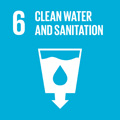- Docente: Cristiana Bragalli
- Credits: 6
- SSD: ICAR/02
- Language: Italian
- Moduli: Cristiana Bragalli (Modulo 1) Marco Maglionico (Modulo 2)
- Teaching Mode: Traditional lectures (Modulo 1) Traditional lectures (Modulo 2)
- Campus: Bologna
- Corso: Second cycle degree programme (LM) in Civil Engineering (cod. 0930)
-
from Sep 18, 2024 to Dec 18, 2024
-
from Sep 17, 2024 to Dec 17, 2024
Learning outcomes
At the end of the course, the student is able to carry out advanced design of hydraulic systems in urban areas, with particular attention to environmental aspects.
Course contents
Module 1 - WATER DISTRIBUTION SYSTEMS
Components of water distribution systems, characteristics and methods of control.
State of the aqueduct infrastructure, identification of critical issues and interventions. The concept of resilience of water distribution systems.
Monitoring in water distribution systems: Supervisory Control And Data Acquisition and district monitoring systems.
Drinking water demand models and smart meters.
Numerical models of water distribution systems. The building of a numerical model. Steady-state model for numerical analysis on a single and extended period. Numerical model of the quality of distributed water. EPANET 2.2 code.
Design of water distribution systems, sectorization and pressure control.
Efficient management of water distribution systems. Water losses: estimation, control and reduction strategies. Criteria for the management of aqueduct systems in conditions of water scarcity.
Protection of water distribution systems in unsteady-state condition. Hydraulic protection devices and sizing criteria.
The integrated water service and its governance. The tariff method. Indicators for measuring technical quality. Water Safety Plan.
Modulo 2 - URBAN DRAINAGE SYSTEMS
Introduction to urban drainage systems: water management and climate change scenarios.
Design of sewer systems. Wastewater flow analysis. The hydrological cycle in urban areas. Statistical analysis of rainfall observation. Stormwater flow analysis: rational method. Design of drainage systems: pipelines cross-sections and materials, flow velocity bounds. Manholes. Gully pots. Combined sewer overflows.
Storage systems: water quantity and quality problems in urban areas respect to the receiving water bodies and groundwater. Detention and retention ponds and first flush tanks.
Numerical modeling of sewer networks under unsteady flow conditions: the EPA SWMM software.
Green Infrastructures. Sustainable Drainage Systems (SUDS): green roofs, infiltration trenches, permeable pavements, etc.
Sewer inside buildings: disposal of rainwater and wastewater from buildings. Design of systems for rainfall and gray water harvesting.
NO-DIG technologies for the installation and rehabilitation of pipes.
Stormwater management in roads, railways and airports.
Readings/Bibliography
ACQUEDOTTI L. Da Deppo, C. Datei, V. Fiorotto. Editore: Cortina (Padova), 2003, ISBN: 887784230X
ACQUEDOTTI V. Milano. Editore: Hoepli, 1996, ISBN-10: 8820322927
SISTEMI DI FOGNATURA. MANUALE DI PROGETTAZIONE S. Artina, G. Calenda, F. Calomino, G. La Loggia, C. Modica, A. Paoletti, S. Papiri, G. Rasulo, P. Veltri (a cura di). CSDU - HOEPLI, Milano, 199, ISBN 13: 9788820324421
L. Da Deppo, C. Datei, "Fognature", Ed. Cortina.
G. Becciu, A. Paoletti, "Fondamenti di Costruzioni Idrauliche", UTET.
Teaching methods
Face-to-face and online teaching; seminars.
Assessment methods
Learning assessment through: i) final written exam where the student is called to solve short exercises and answer questions on the topics covered in class (students should attend all classes or take notes from colleagues when they are absent) without the help of notes or books; ii) oral exam.
Teaching tools
In addition to the reference texts, presentations or handouts relating to the topics covered during the course are available, published on the Virtual platform of the University of Bologna (virtuale.unibo.it).
The teaching material is in Italian and English.
Office hours
See the website of Cristiana Bragalli
See the website of Marco Maglionico
SDGs



This teaching activity contributes to the achievement of the Sustainable Development Goals of the UN 2030 Agenda.

